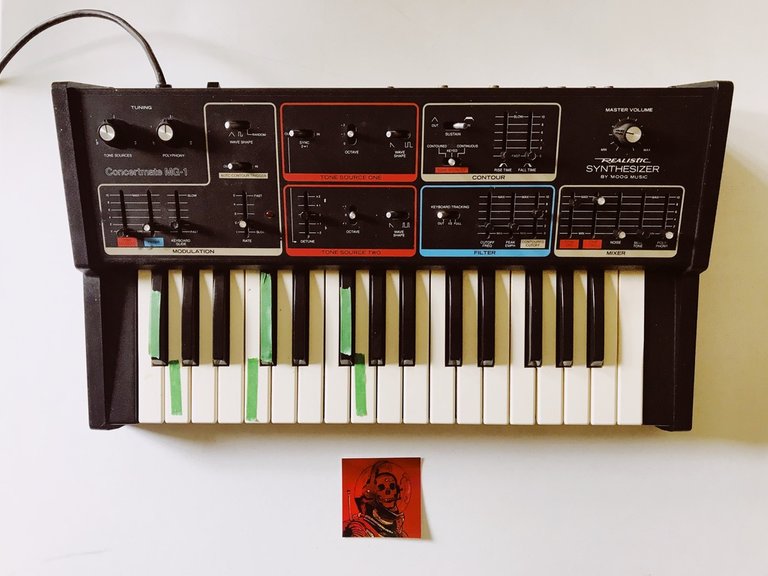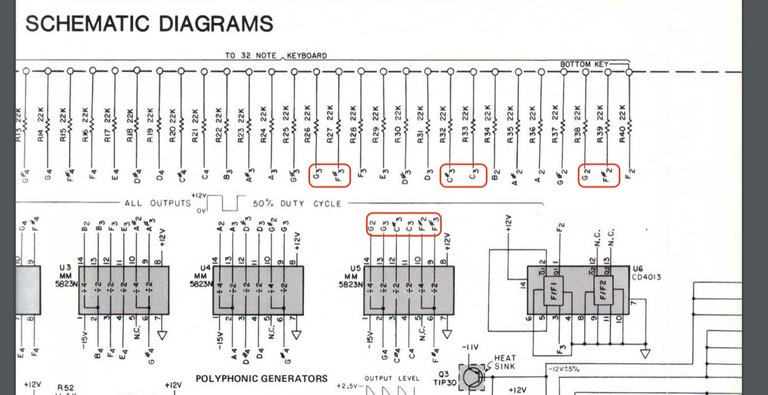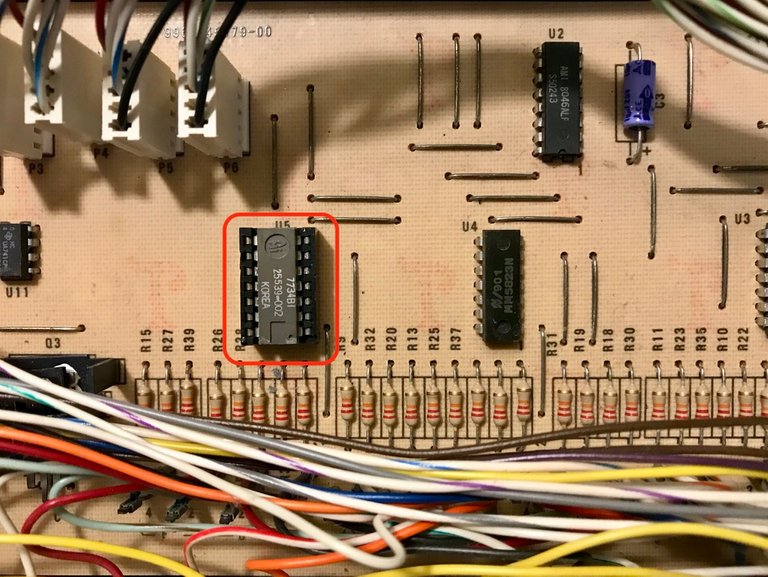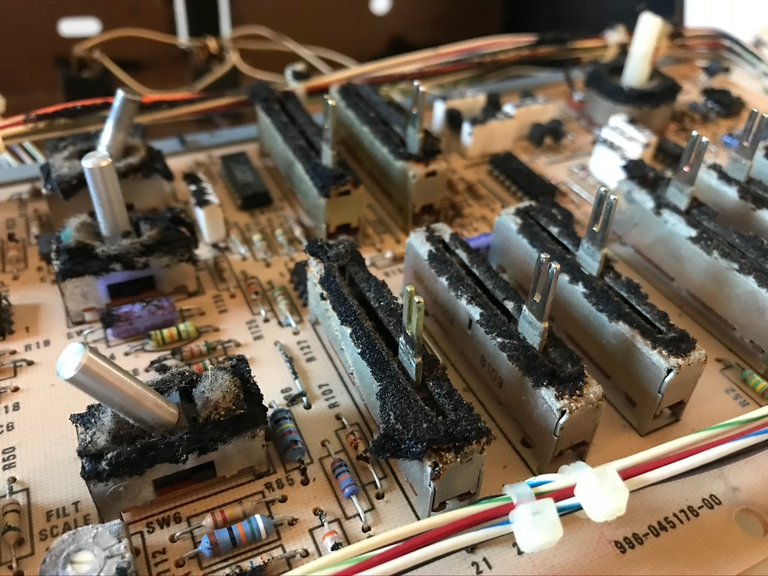Recently I had the pleasure of refurbishing an old Moog Concertmate MG-1. The forty year old unit was actually, overall, in pretty decent condition; seemed like its previous owners did what they could to take care of it. Alas, time is wearing on technology and the living alike.

This is a special synthesizer for me. My first synthesizer was a MG-1, back in ’04. I didn’t know what I was doing on it, but made some fun tracks sampling different sounds and cobbling something together in Fruity Loops. Played a terrifying show or two with it and ultimately sold it to cover house remodeling expenses.
Fast forward to 2020: It turns out one of my old band mates from “ye olde days” bought one on craigslist within the last couple years, however, found it difficult to work with due to its condition. He gave me an opportunity to buy it at a very reasonable price. Nostalgia slapped me in the face and told me passing it up was NOT an option.

Operation
There’s something you should know about me. For as much as I like to masquerade as an illustrator or musician on Hive, I am a very technically proficient individual. I was raised on Apple II, soldering by the time I was six, amateur radio license at nine, programming by eleven. I can’t escape this life, nor do I want to.
So, as nostalgia set in, so did my desire to fix this thing. Troubleshooting and potentially fixing this beautiful synth was too much to pass up.
But hey, enough rambling, let’s dive in.
Missing notes
The primary and most noticeable issue was that there were six keys that weren’t producing a tone, and seemingly random in sequence. All keys marked in this photo:

The good news was that the rest of the keys played beautifully. From here I assumed that electricity was mostly going where it needed to, passing through all the controls on the top board, and that the mechanisms under most of the keys were in working order.
Now, when I say they weren’t producing a tone… well, they would in specific situations. Like, if you were holding another note down prior to the broken key, or if you were in “continuous” mode.
To make it more confusing, this mono synthesizer has a polyphony option and that was working great.
So, the keys aren’t totally broken. This tells me that the keys themselves are probably fine and making the contact they need. Regardless, I disassembled the keyboard anyways and cleaned all the dog hair, human hair and spiders out to ensure good connections.
From here, I started tracing the board. I found that there are three ICs that more-or-less take care of directing voltage from which key you press. I was fortunate to find the original manual and schematic of the synthesizer on the internet, and came across this:
 \
\
Ah! So it appeared I had a bad chip. I hopped on eBay, it’s discontinued of course, so I shelled out $25 for a replacement.
Two days later (amazing seller) I received it in the mail, soldered it in, and sure enough, all broken keys were now producing beautiful bleeps and bloops on their own.

Goo
I found out that one very common issue with the MG-1 is that there is a piece of foam that rests on the top panel to protect the controls from dust. Well, as fate has it, the foam sheet turns to a substance reminiscent of a black toxic chewing gum which seeps into the very controls it was supposed to protect from the elements.
It was disgusting. The foam clings to everything, and is a real pain to clean up. I did my best to painstakingly clean each component of this black tar goop.
After the deep clean and a hit with dioxit, all of the sliders glided much easier, knobs turned with no issues. One of the “mysteries” of this synth really comes with the condition of its pots and sliders. They can become corroded (or filled with goo) and as you play, it might sound like a ghost is tweaking with your parameters. This unit now holds its parameters like a champ.


Back from the Dead
I closed it back up, piped it through some dark and foreboding delay, and it looks like the unit is back to it’s former glory.
The next important decision is if I sell it or not…. Thanks for reading!